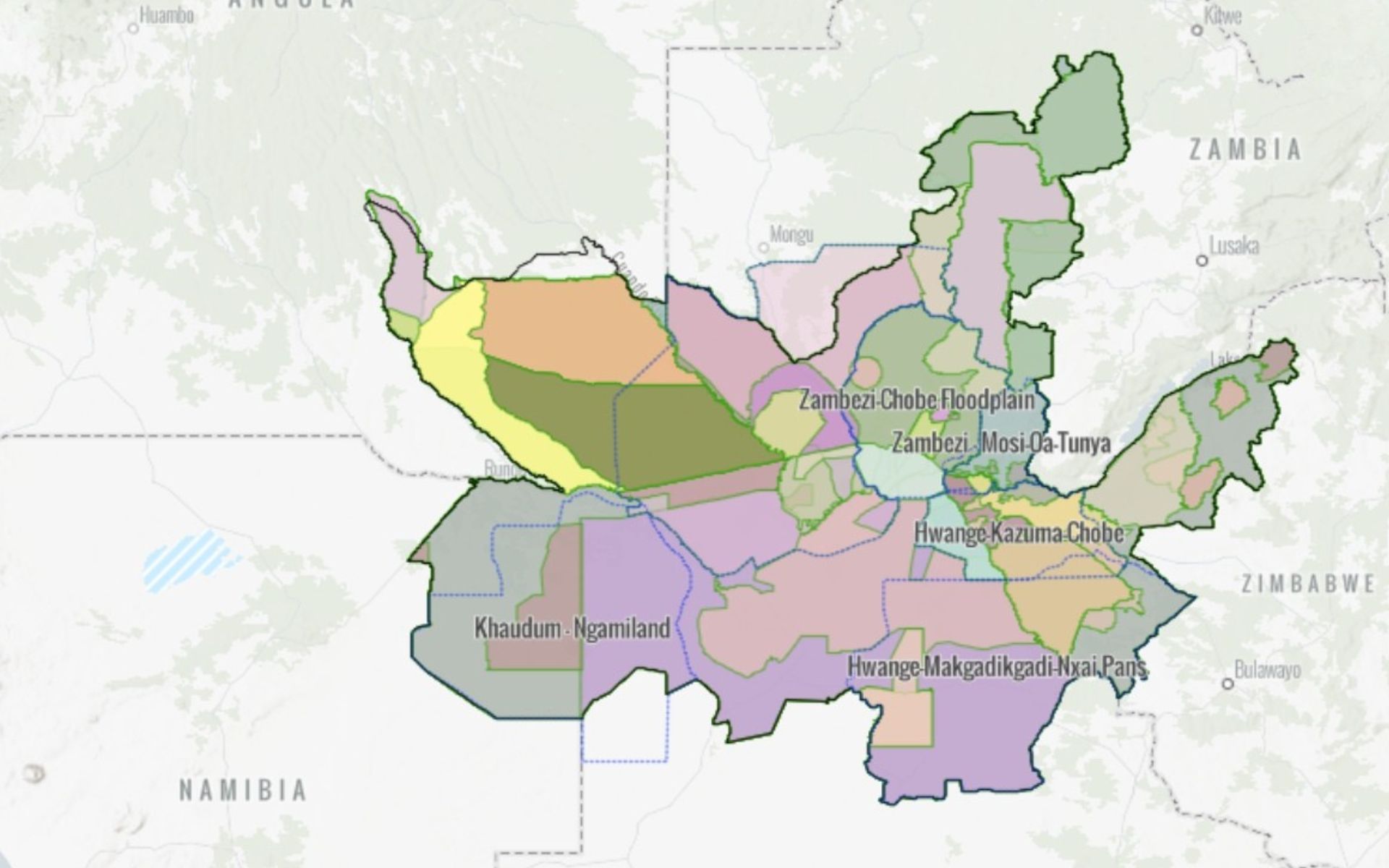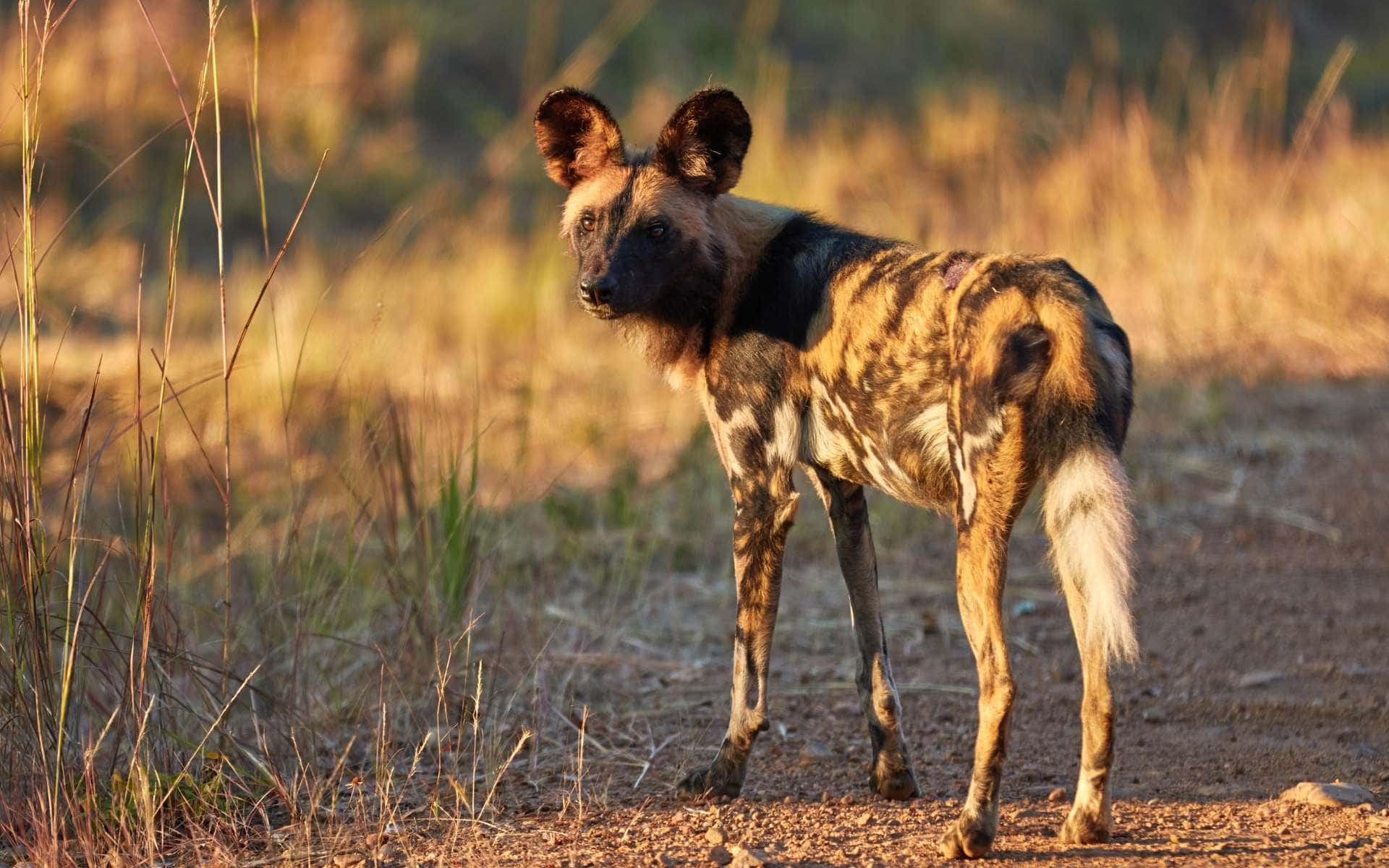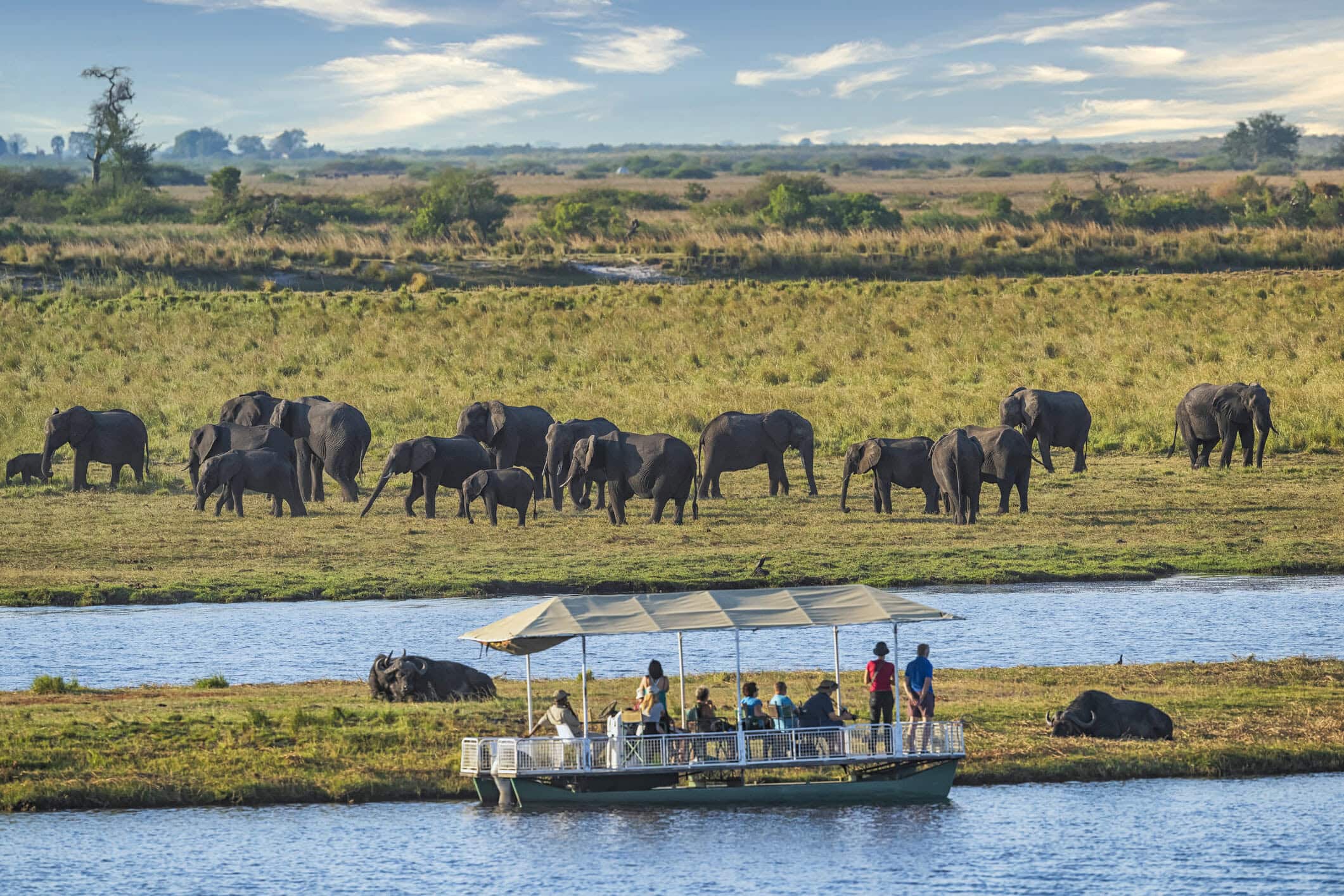Where southern Africa’s main rivers flow lies a conservation area that defies the imagination and combines wildlife and environmental protection with epic safari adventures and community development. Kavango Zambezi Transfrontier Conservation Area (KAZA TFCA) is a dream that’s been realised to the benefit of all involved, from the animals that traverse these countries to the people who rely on the land and the travellers who want to see a plethora of wildlife.
Let’s explore this incredible conservation area and answer your burning questions, including what countries form part of this region, what wildlife make use of these wildlife corridors, and how the KAZA is making safari travel in Africa simpler.
What Countries Are in the KAZA?

There are five countries that have contributed wilderness areas to make up this transfrontier conservation area: Angola, Botswana, Namibia, Zambia, and Zimbabwe. After years of this just being a grand idea, on the 18th of August 2011, the heads of state for the five countries met to formally establish the KAZA TFCA.
When creating this initiative, all involved knew that wildlife do not recognise borders, and to properly conserve animals and help them thrive, national borders must be a thing of the past and coexistence and cooperation must take centre stage. The merger of these massive wildlife areas has opened immense wildlife corridors which facilitate the safe migration and movement of many African species, including elephants.
Why Was KAZA Established?
There are many threats facing Africa’s most beautiful natural environments and vital species. Habitat loss and deforestation, human-wildlife conflict, poaching and wildlife smuggling, and unsustainable infrastructure are all negatively impacting key zones in southern Africa. KAZA TFCA aims to mitigate these threats through:
Safeguarding Natural Resources
A vital objective was to harmonise conservation legislation and natural resource management practices across five countries. This has created a unified and effective approach to the guardianship of these awe-inspiring landscapes.
Protecting Wildlife

The cohesive network of protected areas that make up the KAZA ensures the long-term survival of wildlife populations by providing and restoring vital dispersal corridors and migratory routes. Thanks to cross-border cooperation, animal protection and anti-poaching units are able to better stop wildlife crime.
Empowering Communities
Local communities need to benefit from conservation initiatives in order for the initiatives to be successful. A huge part of the KAZA is implementing programmes that champion the sustainable use of natural resources, directly improving the livelihoods of local communities and actively reducing poverty within the region.
Offering World-Class, Eco-Conscious Tourism
The KAZA offers travellers an exciting blend of breathtaking adventure and luxurious relaxation. Exclusive eco-conscious accommodations dot the landscape without hindering the environment. Plus, the UNIVISA facilitates seamless cross-border movement.
How Big is the Kavango Zambezi Transfrontier Conservation Area?
At 520,000 km²/200,000 sq mi, KAZA is the world’s largest terrestrial conservation area and is nearly double the size of the United Kingdom! Within this massive area are national parks, forest reserves, and community-managed areas. Habitats are broad, including vast savannahs, thundering waterfalls, thriving woodlands, and vibrant wetlands.
There are three main rivers that run through KAZA: the Zambezi, Kwando, and Okavango. These waterways (among others) are essential in supporting critical habitats that both KAZA’s people and wildlife depend upon.
Other notable inclusions in the conservation area include the iconic Victoria Falls between the borders of Zambia and Zimbabwe; the Okavango Delta, a UNESCO World Heritage Site; as well as the Makgadikgadi Pans, the otherworldly salt pans and one of the sites of the zebra migration in Botswana.
What Wildlife Can Be Found in KAZA?

An array of wildlife can be seen during an African safari here, including the world’s largest population of elephants. Thanks to the establishment of the KAZA, these elephant herds can now move more freely through this region. This is vital to the conservation of the land, as these giants clear trees in wooded areas and disperse seeds while they move and forage, allowing new plants to grow and forests to regenerate.
Approximately 25% of Africa’s wild dogs (an endangered species), around 20% of the continent’s lions, and an estimated 15% of the world’s cheetah population can be found within the conservation area. Habitat loss and conflict with humans are at the forefront of the decline of these predators, so the KAZA is a positive move towards wild spaces being protected so that these species and so many more are able to thrive.
The rivers that flow through the KAZA house freshwater fish, including tigerfish. Along the banks, birders will delight in the number of stunning waders and waterbirds – these are just some of the over 650 bird species found in the conservation area.
Safaris in KAZA
An Africa wildlife safari in the Kavango Zambezi can take you through varied habitats to see a variety of stunning species. Whether you want to go on a birdwatching safari in Botswana on a mokoro (traditional dugout canoe), peer over Devil’s Pool at Victoria Falls, or visit Hwange National Park during a Zimbabwe safari to see a wealth of animals, including elephants, wild dogs, and hyenas, the KAZA UNIVISA makes it easier to do all of this in the same trip.
The KAZA UNIVISA: Making Multi-Destination Safaris Simpler
In order to grow tourism in this region and make travelling easier for safari-goers, KAZA launched the UNIVISA. This visa is a multi-country visa that allows tourists to go on a Zambia safari and visit Zimbabwe as well as go for day trips to Botswana through the Kazungula border. The visa costs US $50 and grants multiple entries into Zambia and Zimbabwe for 30 days within a one-year period.
During a safari here, the emphasis is on water-based experiences with a balance of nature and cultural excursions.
The Rivers of Life

In 2024, the Rivers of Life destination brand was launched to position Kavango Zambezi as a premier transfrontier tourism destination. The name pays homage to the mighty rivers that flow through the region, nurturing the rich biodiversity found here.
The Kavango Zambezi ‘Rivers of Life’ brand represents more than just a new visual identity – it embodies the essence of the area’s unique offering, where five visionary nations have come together to care for a vast conservation area rich in natural and cultural diversity,” explains Dr Nyambe Nyambe, Executive Director of the KAZA Secretariat.
Rivers of Life is a leading model for sustainable development in Africa and shows that thriving wildlife, resilient communities, and responsible tourism can coexist in harmony.
The Kavango Zambezi invites you to go deeper on your next African safari – to have an adventure that involves meaningful connections with locals, conservation stories and initiatives, and remote wildernesses that will take your breath away. These vast expanses and wildlife-rich areas need to be experienced for yourself.
Author: Paula Rabeling
Published: 17 April 2025
Last Update: 17 April 2025